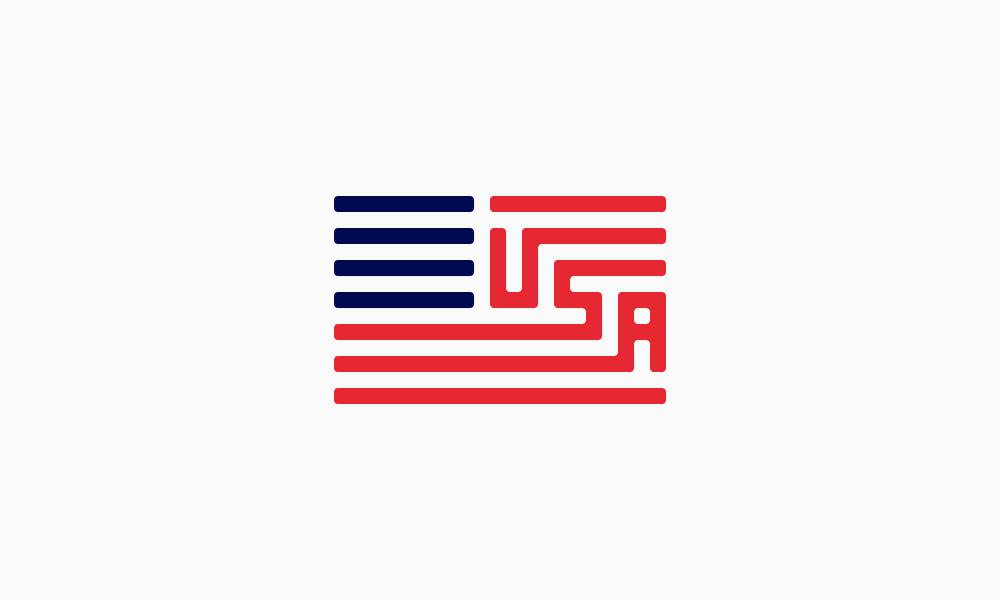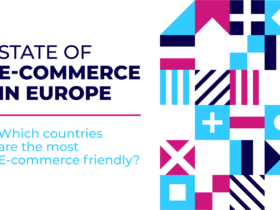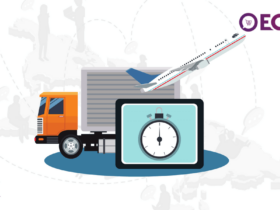Paul, a 24-year-old musician from France, is the founder of Ishihara Design – an online store that sells t-shirts, hoodies, and other products with ’80s-inspired designs.
What’s so special about it?
The fact that the great majority of the store’s sales comes from the US – one of the world’s biggest markets, which has always been a tempting target for European sellers. And rightly so, as US retail e-commerce sales are estimated to reach nearly $561 billion by the end of 2019. Who wouldn’t like to have a share of that pie, right?
Apparently, Paul has found the fork to that e-commerce pie. The store that he launched just last year and is managing on the side of his day job as an English teacher, is estimated to soon exceed $15’000 in revenue.
So, we sat down with him to find out his secrets, lessons learned, and tips for other sellers on how to enter the market that every entrepreneur has their eyes on.
When targeting the US makes sense (and when it doesn’t)
For Ishihara Design, focusing on the US market from day one was a no-brainer. The store sells vaporwave and future funk-inspired clothing, which are big trends in the US right now. ”Besides, these trends originally come from the US, so obviously, this market was my first choice,” the store owner explains.

Nowadays, most new movements are born online, which allows anyone – regardless of their location – to discover and follow trends coming from the other side of the world. In the case of Ishihara Design, the founder noticed that retro vibes in music and fashion are becoming increasingly popular across the USA, and decided to use the momentum and launch his business.
”Because of its online origins, there was a great deal of transparency when it comes to the evolution of that style,” Paul says. Being aware of how the style has shaped and changed over time helped him create timely designs that spoke to the specific niche at that specific moment.
”Of course, trends continue to change. Therefore, it’s important to follow local trendsetters on social media, as well as ask customers for feedback and reviews,” he suggests. Shoppers from the target market can be a great inspiration for new products and designs.
Finally, asked when targeting the US doesn’t make sense, Paul says: ”I would not try to enter the US market with a geo-dependent niche product. For example, Americans probably wouldn’t buy Bastille Day-themed products because France’s Independence Day just isn’t really relevant to them. In such a case, I’d save effort and money and stick to the local market.”
Fair enough.
What are American shoppers like?
Do US shoppers differ from those from Europe? According to the owner of Ishihara Design, they do.
”Americans, in my opinion, are on top of the ”food chain” when it comes to online shopping. They’re early adopters when compared to Europeans who are more conservative and reserved. And I’m not only talking about being open to new products but also to marketing – Americans generally seem to be more receptive to different marketing tactics.”
That’s true. For example, stats show that Americans click on ads twice as often as Europeans. US customers are also quite open to email marketing – 61% are willing to receive promotional emails at least once a week. Europeans, on the other hand, are more concerned about their online privacy, which recently paved the path to the GDPR regulation.
Atop of that, Americans are also used to more aggressive marketing than Europeans. For example, advertising calls-to-action such as ”Shop now” or ”Buy now” are sometimes perceived as too aggressive in Europe, but are effective in the USA.

”Another example – newsjacking, when brands jump on a breaking news story to generate media coverage and social media engagement. Europeans are quite sensitive when it comes to tactics like this, but Americans seem to be okay with that” – Paul has observed
While Americans are ready to take in more ads and marketing, they also have high expectations when it comes to online shopping:
First, they want fast (and free) shipping. Amazon Prime has set the standard by offering free delivery in two days or less on millions of items, and now shoppers expect quick delivery from other sellers as well. ”Basically, the only way for European sellers to meet these expectations is to find a reliable order fulfillment partner across the ocean. I work with Printful that has fulfillment centers on both coasts, so they can ensure fast delivery within the country.”
And second, they want good prices and discounts because compared to European shoppers, Americans are much bigger deal hunters. ”Flash sales, promotions, offers – everyone who sells to the US should do them,” Paul concludes.
The legal aspect of entering the US market
Complying with local laws and regulations is probably the scariest part when entering a foreign market. And the US doesn’t make following the rules easy at all, as different states can have different laws to comply with.
For example, the US has no national sales tax – different states have different sale taxes. If you’re based and ship your product from outside of the USA, this doesn’t affect you. However, if you hold your inventory in a warehousing center in the USA, use a local dropshipper or even if you have an US-based affiliate – someone who sends customers to your store and earns a percentage from sales – you have to charge sales tax from your customers in that particular state.
That is, if you keep your store’s inventory in a fulfillment center in California, you have to charge a sales tax – 7.25% – from customers who shop from and/or ship to California. Shoppers from New York, on the other hand, would not have to pay this tax.
”If you’re not ready and willing to go into US taxes and laws, I would strongly recommend choosing a local partner that would take care of these things for you. Printful, for example, keeps track of new regulations and laws, then instructs their sellers on what changes they should make on their side. They can ask you to update your tax settings, review your designs to make sure they don’t infringe copyright, etc. That really saves time and gives you peace of mind.”
Key lessons learned
To sum up, here are some key takeaways:
- Unless your product is geo-dependent, the USA is a great market to target.
- Do your homework! Get to know your target audience, the culture, and shopping expectations of your target market.
- Build your business on a trend – use the Internet to discover and follow them.
- It’s okay to use more aggressive marketing to sell to US shoppers than you’d use to target European customers.
- Make sure you meet your US shoppers’ demands for good deals and, even more importantly, fast shipping – partner up with a local order fulfillment partner to be able to provide that.
- When choosing a local partner, never lower your standards. Always choose the best option, even if it costs a little more than the others. There’s a good reason behind your standards, and you should never compromise them.





